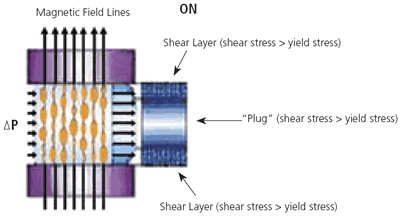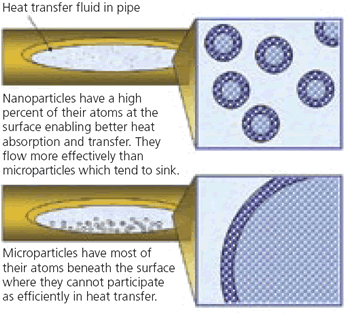|
Since its inception, Strem Chemicals has focused on offering unique organometallic compounds for both academic and industrial research purposes. Close relationships with leading researchers in the field have enabled Strem to stay abreast of the latest scientific advances in and regularly add novel chemicals to our product portfolio. Most recently Strem has embraced the emerging area of nanotechnology and formed a collaboration with the Max-Planck-Institut fuer Kohlenforschung. A series of nanomaterials, including metal nanoclusters, metal nanocolloids (organosols and hydrosols), metal nanopowders, metal nanoparticles, and magnetic fluids are now available from Strem. Below is a discussion of potential applications of these nanomaterials in the automotive market.
Exhaust Catalysts
Use of catalytic converters has significantly reduced emissions of hazardous air pollutants from automobiles. Application of nanotechnology may enable further improvements on existing technology.
|

|
|
Figure 1. TEM image of a platinum nanoparticle.
|
Most catalytic converters utilize the precious metal platinum, which is experiencing shortages and therefore increasing in cost. The catalytic reactivity of platinum nanoparticles is significantly enhanced over existing catalysts due to the fact that a much greater surface area of the metal is exposed. Efficiency increases of 50% or greater can be achieved in some cases. The cost of catalytic converters based on nanoparticulate platinum catalysts could be significantly reduced. The manufacturing process may also be simplified, providing additional cost savings. Development of catalytic converters with platinum nano-composites have also been investigated as a way to dramatically reduce the amount of platinum required.
Shock Absorbers
Shock absorbers provide the comfortable ride we experience today in vehicles ranging from sports cars to sport utility vehicles and pickup trucks. Nanotechnology – specifically magnetic nanoparticles – are advancing shock absorber capabilities further than ever before.
|

|
|
Figure 2. Use of magnetic nanoparticles in shock absorbers.
|
Magnetic fluids are comprised of magnetic nanoparticles in a fluid suspension. Depending on the size of the nanoparticles, the magnetic fluid may be able to change its apparent viscosity in proportion to the strength of the magnetic field applied to it. Therefore, the viscosity can be controlled dynamically, which allows for active damping. Large amounts of mechanical power can be controlled with a small amount of electrical power, making this method of vibration control much more efficient than traditional. Some magnetic fluids can transform themselves into a nearly solid state, making it possible to adjust the stiffness thousands of times per second. Shock absorbers based on magnetic fluids, therefore, provide a very smooth ride and can be adjusted to the individual wishes of the driver.
Shock absorbers based on magnetic fluids are used today in the Audi Le Mans Quattro. Energy is derived from the electronic control system, and the on-board computer adjusts the shock absorbers based on information provided by sensors that detect the actual driving situation within a few thousandths of a second. The driver can switch between a sporty feel, where the magnetic fluid is at low viscosity, and a more comfortable ride, where the viscosity is set at a higher level.
Coolants
The rising cost of fuel continues to make the headlines on a daily basis. Consumers are focused now on purchasing vehicles with increased fuel efficiency. Automakers are looking for technology that will improve the fuel efficiency of even the largest SUV’s on the market. Nanomaterials have the potential to do just that.
Nanoparticles when added to heat transfer fluids increase their performance. The solid nanoparticles conduct heat better than the liquid. Nanoparticles work best because they stay suspended in liquids longer than larger particles. They also have a much greater surface area, which is where heat transfer takes place. The smaller the particle, the greater its ability to enhance heat transfer.
Nano-additives, including nanoparticles and nanopowders, could potentially reduce the size of automotive cooling equipment while increasing its heat transfer capabilities. Engines and other components could also be smaller and lighter, providing a lighter weight vehicle. In addition, engines could potentially run at more optimal temperatures. These factors would lead to more fuel efficient automobiles. Reduced consumption of fuel would also result in reduced emissions to the environment as well.
|

|
|
Figure 3. The relative benefits of nanoparticles as opposed to microparticles.
|
Potential Applications in the Automotive Market
Numerous other potential applications exist in the automotive market for nanomaterials from Strem. Areas currently under investigation include:
- Spark plugs using nanoscale metal and ceramic powders
- Nanocatalysts for octane enhancers
- Fuel additive for diesel engines
- Seatbelts
- Vehicle leveling sensors
Nanomaterials Available from Strem
A listing of specific metal nanoclusters, metal nanocolloids (organosols and hydrosols), metal nanopowders, metal nanoparticles, and magnetic fluids offered by Strem is available upon request or via our website. Application sheets discussing the potential use of these products in the medical and pharmaceutical, defense and security, chemical, automotive, and energy fields, and as magnetic fluids, can also be obtained from Strem. More information is also available in the form of a reference sheet listing literature source materials.
A complete list of references can be found by referring to the original document.
|